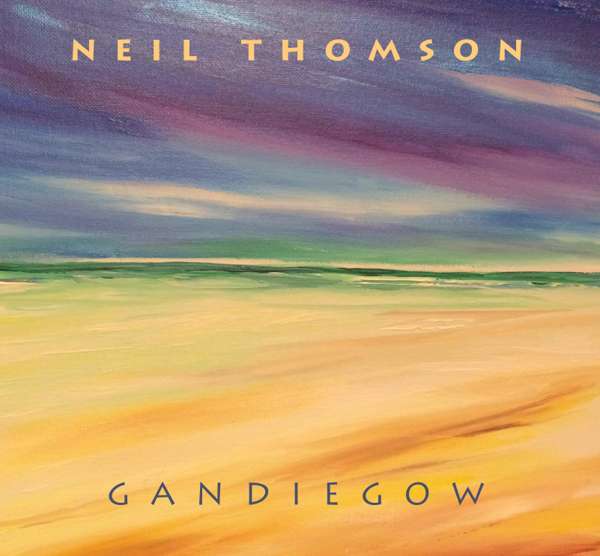
Gandiegow
After a 12 year hiatus Paisley born singer musician Neil Thomson returns with a new folk inspired album titled ‘Gandiegow’which covers a var
The album features the cover art of West coast artist Jo Maclean which depicts a 'Gandiegow', defined in the Scottish National Dictionary (1700) as: A squall of wind and rain, a heavy shower. Cf. Gandaguster.In pl.:“appearance on sea to ‘eastert’ before a heavy gale” (Bwk.(Eyemouth) 1916). The title and cover art are intended to reflect the musical compositions within.
Neil’s compositions are mainly inspired by his native Scotland. It's roots, tradition and natural environment providing inspiration for creating music in his own relaxed, gentle style. The recording features fingerpicking guitar, alternative tunings and haunting low whistle melodies and as with his previous recordings, Neil has been inspired to record in the creative seclusion of Watercolour Music in the Scottish Highlands.
Then recording also continues his setting of traditional poems to his own musical compositions. These include ‘Wood for Burning’ based on a traditional poem by Lady Celia Congreve, 'The Hedgehog Song' (Anon) and the 'Tryst' by Perthshire Poet William Soutar. Instrumental versions of 'Wood for Burning' and 'The Tryst' also feature.
Notes on the songs from the sleeve notes are included below.
PRAY THESE WINGS WILL CARRY ME Originally Inspired by bird migration and struggle in adversity. Since writing it has acquired a new level of poignancy with the current european migrant crisis.
THE HOLY CITY On the nights of 13 and 14 March 1941, German bombers attacked the munitions factories and shipyards of Clydeside. 260 bombers arrived on the first night, and with rescue work continuing, 200 bombers returned to wreak havoc for over seven hours the following evening. 528 civilians were killed, over 617 people were seriously injured, and 48,000 civilians lost their homes, many of them shipyard workers and their families. Prior to the bombing, Clydebank was known as the Holy Citymbecause the cheaply built flat roofed tenements resembled Jerusalem when viewed from the river Clyde.
OIL AND WATER Religious sectarianism was a sadly normalized backdrop to my life growing up in Glasgow in the 1970/80s. Thankfully our society is increasingly taking a zero tolerance approach to the blight of religious intolerance and bigotry.
LOST BETWEEN SEA AND SKY A song about the crews of the clipper ships, that sailed the trade winds from Britain to far flung corners of the world throughout the growth of trade and empire in the18th/19th Centuries. The song highlightes the families and loved ones left behind.
THRILL OF THE DANCE This song was inspired by community dance and it’s increasingly restored prominence in contemporary Scottish culture. The Cèilidh is derived from the Old Irish céle (singular) meaning “companion”. The word later became céilidhe or céilidh and was originally used to describe a social gathering or event.
WOOD FOR BURNING The words are believed to have been written by Lady Celia Congreve and first published in the Times on the 2nd March 1930 as ‘the Firewood Song’. The poem gives a sense of the significance and reverence of wood that existed in a world before the convenience of electricity.
HEDGEHOG SONG Hedgehogs are a unique point of contact with the natural world. Their distinctive appearance makes them a much-loved species. Sadly they are in decline due toindustrialised farming methods and increased road traffic.
